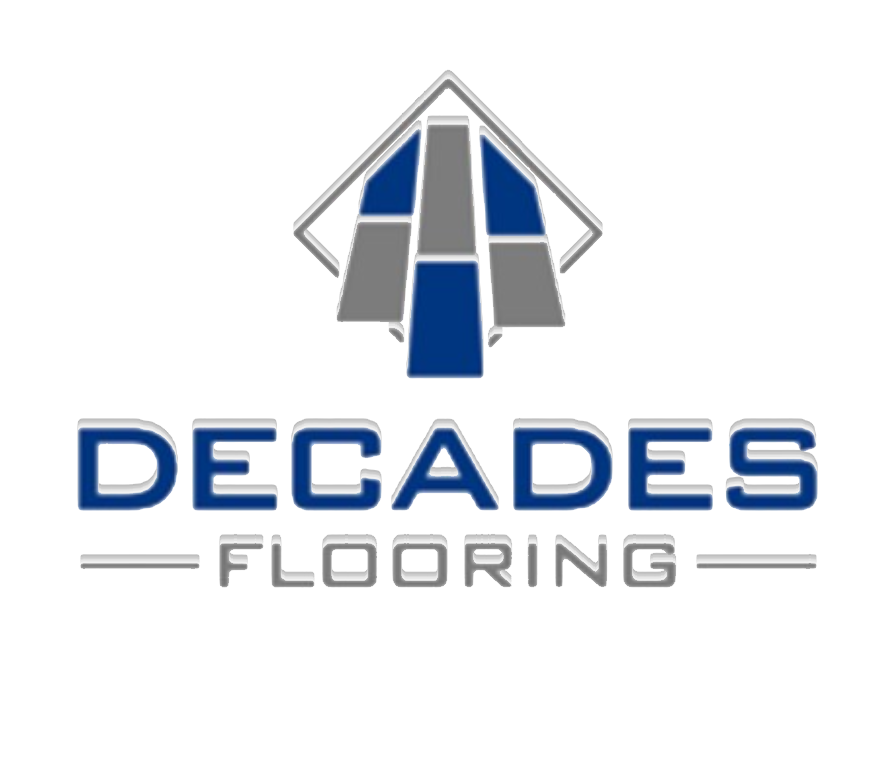Laminate flooring has become increasingly popular in recent years due to its durability, affordability, and versatility. This type of flooring is made up of several layers that are fused together using heat and pressure, resulting in a product that resembles real hardwood or stone.
Laminate flooring can be installed in a variety of spaces, from residential homes to commercial buildings, making it an excellent option for those looking to revamp their interiors. Imagine walking into a room with breathtaking views of the ocean on a sunny day. The light reflects off the water creating a beautiful shimmering effect that illuminates the entire space.
Now imagine stepping onto the floor and experiencing that same shimmering effect underfoot. That’s what laminate flooring can do for your home or business – add depth and character to any room with its realistic textures and finishes.
In this article, we’ll explore different types of laminate flooring available in today’s market and where they can be installed so you can make an informed decision about which one will best suit your needs.
Basic Laminate Flooring
Basic laminate flooring is a popular and cost-effective option for homeowners looking to upgrade their floors, offering the aesthetic appeal of hardwood without the high price tag. It is made of several layers that are fused together, including a wear layer, decorative layer, and core layer.
The wear layer provides durability and protects against scratches and stains, while the decorative layer gives the appearance of real wood or stone. The core layer is typically made of high-density fiberboard (HDF) or medium-density fiberboard (MDF), which provides stability and helps to prevent moisture damage.
Basic laminate flooring can be installed in many areas of a home, including living rooms, bedrooms, hallways, and kitchens. However, it should not be installed in areas with excessive moisture such as bathrooms or laundry rooms. Additionally, it may not be suitable for areas with heavy foot traffic or pets due to its susceptibility to scratches and dents.
Despite these limitations, basic laminate flooring remains a popular choice for homeowners due to its affordability and versatility in design options.
Engineered Wood Laminate Flooring
Engineered wood laminate flooring is a popular choice for homeowners due to its durability and affordability, with an estimated 1.3 billion square feet of this type of flooring sold in the United States annually.
Engineered wood laminate flooring consists of multiple layers that are bonded together using heat and pressure. The top layer is made up of a high-density fiberboard (HDF) or medium-density fiberboard (MDF), which provides stability and prevents warping.
The second layer is the design layer, which can mimic the look of hardwood, stone, or tile through digital printing technology. Finally, there is a clear protective layer that adds scratch resistance and protects against moisture.
One benefit of engineered wood laminate flooring is its versatility in terms of installation locations. It can be installed on any level in a home including basements, as long as proper subfloor preparation has been done beforehand. It also works well over concrete slabs and radiant heating systems.
However, it’s important to note that it should not be installed in areas with excessive moisture such as bathrooms or laundry rooms without additional precautions like sealing edges or using waterproof underlayment.
Overall, engineered wood laminate flooring offers homeowners an affordable option for achieving the look of real hardwood floors while providing durability and easy maintenance.
Waterproof Laminate Flooring
Waterproof laminate flooring is an excellent choice for areas that are prone to moisture, such as bathrooms, kitchens, and basements.
This type of flooring is designed to resist water damage and can withstand spills, splashes, and even flooding without warping or buckling.
While it may be more expensive than basic laminate flooring options, its benefits in moisture-prone areas make it a worthwhile investment.
Ideal for Moisture-Prone Areas
Moisture-prone areas, such as basements or bathrooms, are well-suited for the installation of laminate flooring due to its resistance to water damage. Laminate flooring is designed with a resin-based coating that provides a waterproof barrier against moisture and spills. This makes it an ideal choice for areas where spills or flooding may occur.
Furthermore, the ability of laminate flooring to resist warping, cracking, or peeling under moist conditions makes it an excellent long-term investment.
When considering the installation of laminate flooring in moisture-prone areas, there are some key considerations to keep in mind. Firstly, it is important to choose a laminate product that has been specifically designed for use in high-moisture environments. Secondly, proper installation techniques must be used to ensure that the floor remains level and stable over time.
Finally, regular maintenance should be carried out to prevent any build-up of dirt or debris that could lead to potential water damage issues. By following these guidelines and taking appropriate precautions when installing laminate flooring in moisture-prone areas, homeowners can enjoy durable and long-lasting floors that look great and perform well over time.
Resistant to Water Damage
One significant advantage of using laminate flooring in high-moisture areas is its ability to resist water damage. Laminate flooring has a top layer that is made from a melamine resin, which makes it highly resistant to water and moisture.
In fact, studies have shown that laminate flooring can withstand exposure to standing water for up to 24 hours without any significant swelling or warping.
The core layer of laminate flooring is also designed to be moisture-resistant. It is typically made from high-density fiberboard (HDF) or medium-density fiberboard (MDF) that has been treated with wax or resin. This treatment helps prevent the absorption of moisture, which can lead to swelling and warping over time.
With its resistance to water damage, laminate flooring is an excellent choice for bathrooms, kitchens, laundry rooms, and other areas where moisture may be present.
More Expensive than Basic Laminate Flooring
However, it is important to note that the cost of laminate flooring with advanced water resistance features can be higher than basic laminate options. This is because these types of laminate flooring have additional layers and coatings that make them more resistant to moisture and water damage. The extra cost may also be due to the use of more expensive materials such as high-density fiberboard (HDF) or medium-density fiberboard (MDF) which are known for their durability and strength.
Despite the higher cost, investing in water-resistant laminate flooring can save homeowners money in the long run by preventing costly repairs and replacements due to water damage. Moreover, opting for this type of flooring offers a range of benefits such as improved indoor air quality, easy maintenance, and increased home value. By choosing a reputable brand with a good warranty program, homeowners can ensure they get the most out of their investment in water-resistant laminate flooring.
– Increased peace of mind knowing that your floors are less likely to suffer from water damage.
– Improved health by reducing mold and mildew growth that can cause respiratory problems.
– Higher resale value for your property since this type of flooring is considered an upgrade.
– Enhanced aesthetic appeal due to the wide variety of colors and textures available in modern designs.
Overall, while it may require a larger initial investment, opting for high-quality water-resistant laminate flooring will pay off in terms of durability, longevity, and aesthetic appeal. Homeowners should weigh the costs against their individual needs before making any decisions but know that there are many advantages associated with this type of product.
Frequently Asked Questions
Can laminate flooring be installed in a basement?
Yes, laminate flooring can be installed in a basement. However, it is important to choose a type of laminate that is specifically designed for below-grade installations and has moisture-resistant properties to prevent warping or damage from water or humidity. Proper installation techniques should also be followed to ensure durability and longevity.
Is it possible to install laminate flooring over existing tile or carpet?
Yes, it is possible to install laminate flooring over existing tile or carpet. However, it is important to ensure that the surface is clean, level, and flat before installation. It is recommended to use underlayment for better performance and longevity of the laminate floor.
How long does laminate flooring typically last?
Laminate flooring typically lasts between 15-25 years with proper maintenance and care. However, the lifespan can vary depending on factors such as usage, quality of installation, and wear and tear.
What is the average cost of installing laminate flooring in a room?
Laminate flooring installation cost varies depending on location, size of the room, and the quality of laminate used. On average, homeowners can expect to pay between $3 to $8 per square foot for installation.
Does laminate flooring require any special maintenance or cleaning?
Laminate flooring requires regular cleaning and maintenance to keep its appearance intact. This includes sweeping, vacuuming, mopping with a damp cloth, and avoiding abrasive cleaners. It is important to clean up spills immediately to prevent damage.
Conclusion
Laminate flooring is a popular choice for homeowners due to its affordability, durability, and ease of installation. There are three main types of laminate flooring: basic, engineered wood, and waterproof.
Basic laminate flooring consists of four layers: a top wear layer, a decorative layer, a core layer, and a backing layer. This type of laminate is suitable for low-traffic areas such as bedrooms or living rooms.
Engineered wood laminate flooring is made by fusing together several layers of real wood with a high-density fiberboard core. This type of laminate mimics the look and feel of hardwood floors while being more affordable and easier to maintain. It can be installed in any room in the house except for areas with excessive moisture like bathrooms or laundry rooms.
For areas prone to water damage, waterproof laminate flooring is the best option. It has a special coating that makes it resistant to spills and moisture damage. It can be installed in any part of the house including kitchens and bathrooms.
How Should Laminate Flooring Be Installed To Make A Room Appear Larger?



